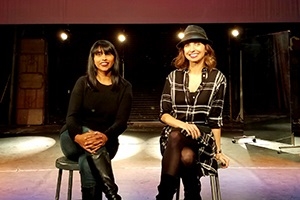BEST OF 2016: 12 on Tuesday with Matthew Braunginn
Madison365
Madison, Wisconsin
2016-12-21
Henry Sanders

Matthew Braunginn
A founder of the Young, Gifted and Black Coalition, Matthew Braunginn works to close the achievement gaps as a coordinator with UW’s PEOPLE program. [Since this came out, Braunginn has become the Student Engagement Specialist for the Middleton-Cross Plains Area School District. –Ed.] He’s also a regular columnist for Madison365.
Rank your Top five MCs. I love the Wu-Tang Clan. They’re for the kids, they’re also my favorite group and 36-Chambers is a better album than Illmatic, I stand by that. Listen to them side by side and you’ll know what I mean. But this is about MC’s and I’ll try and respect this rule here cuz I’m sure I’ll break many more as I go on. So let’s see here…my favorites:…
…What does it mean to be Interracial in Madison? This question…this is a massive question that I could write a dissertation on. But it’s unique in so many ways. I think that in one way I was able to see the depths of white supremacy in a way that few non-white, particularly black people, get to see.
I mean, this city “othered” me in so many ways, which, if you see me, can be laughable because I’m white-passing. It’s funny because ever since I wrote the piece “Not Quite White” for Madison365 I’ve had mostly mixed people or black people in mixed race relationships assume two things: One, they assume the background of my father is mixed because I’m light skinned. (There is mixing on my dad’s side of the family, but it shows how ignorant people are of the history of that in America.) And two, they assume I’m saying that something is wrong with being mixed. I mean, c’mon now, they didn’t read the piece, they didn’t see that it’s my lived experiences, mixed with understanding the history of the Black American experience that led me to say I’m a mixed-race, BLACK male. Not just mixed, not mixed with white, like there’s something wrong with being black, like I’m part white, why would I ever want to be Black? Which just shows the depths of white supremacy.
That’s the thing; I was never fully accepted as white, even though I’m white passing, which caused a lot of confusion growing up. I didn’t know how I was – was I black or white? Some ungodly mixed between the two, forever existing between the ether, never knowing when white people would decide I could pass for white or when they would want me to be Black. That is part of the diversity of the Black American experience. This isn’t about the “one drop” rule; it’s about how deep white supremacy goes that someone like me can still feel and experience it. That I can be in a group of white people that is in the middle of an encounter with cops, and the officers somehow are more aggressive towards me than the white people around me. I learned, through being aware enough of my experiences, that I am not white, nor will I ever be; white supremacy, white people will make sure to let me know that I am not white. So I claim my black identity with pride, as I want nothing to do with the legacy of white supremacy and want to help this nation break free of that. But more importantly I know there is nothing wrong with being black, that black is beautiful, that that is part of my history, it’s in my blood; my grandfather’s cousin A. Leon Higginbotham helped write the South African constitution, I mean, c’mon. And even more important I love my dashes of melanin and will glow in my blackness; I love my blackness and yours…
Read the entire article here.



